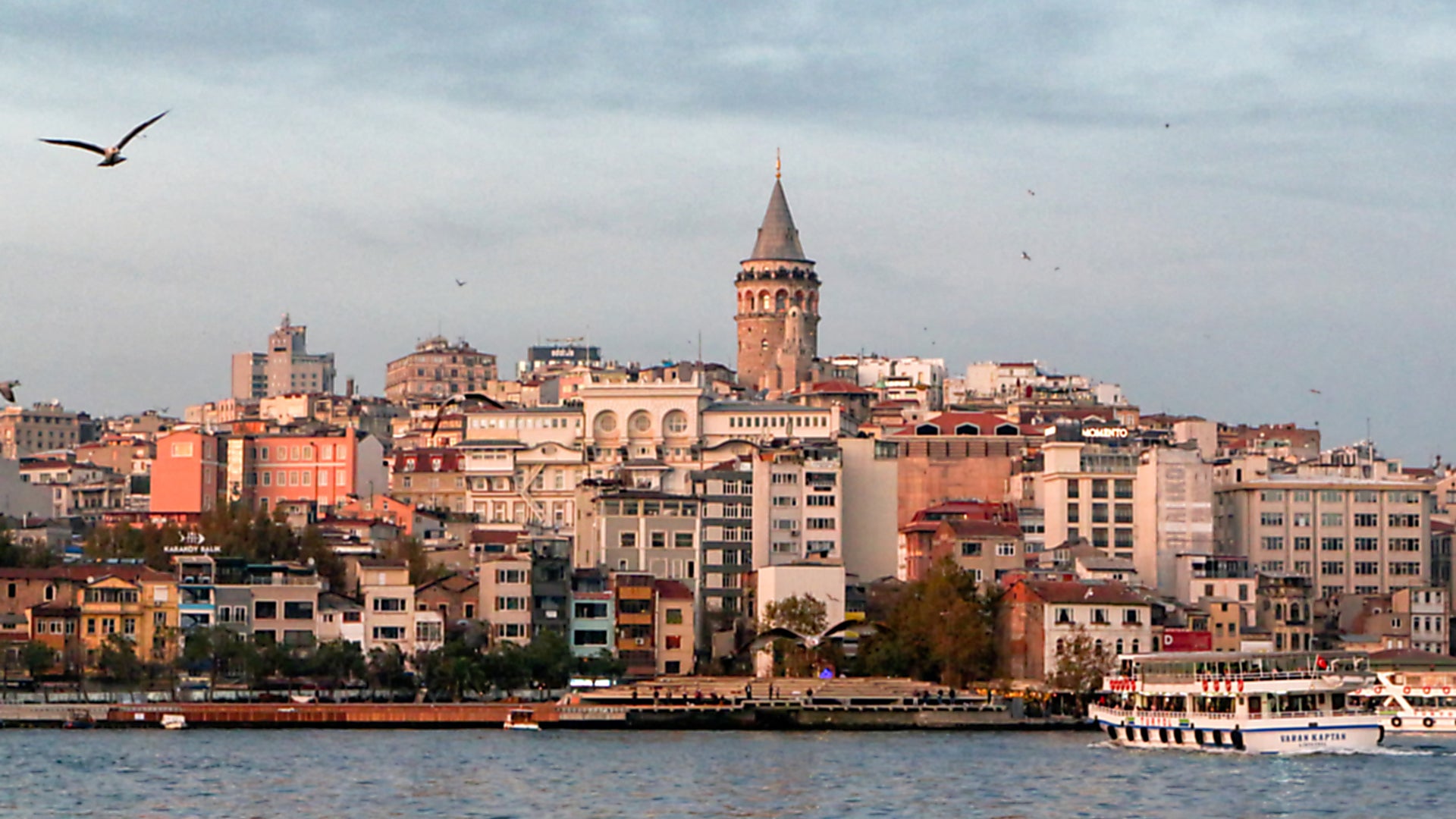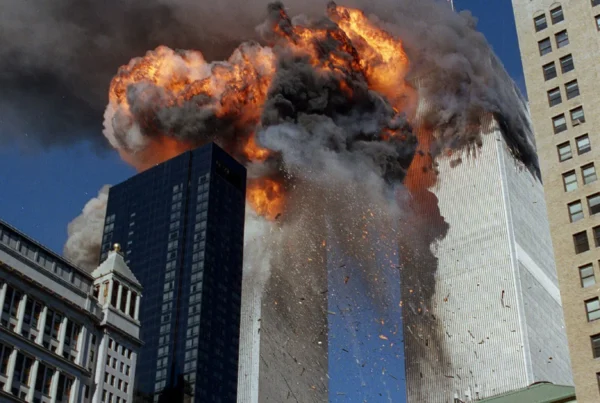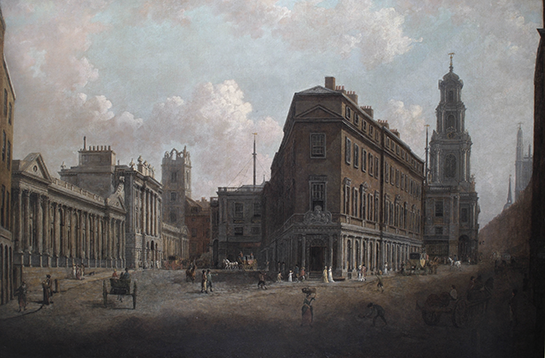Historical Analysis – Byzantine Art and the Fall of Constantinople The source I have chosen is a Byzantine painting by the late Italian medieval artist Ambrogio Lorenzetti and produced in 1342, now housed in Uffizi Gallery of Florence. The famous artwork painted for the chapel of San Crescenzio within the cathedral of Siena. In the 14th century absolute monarchy was a typical structure for countries and empires. Absolute monarchs were descendants from God and were supreme leaders, capable of supreme authority and absolute sovereignty of their people. This depiction of a religious matter in the “Presentation of the Temple” is an example of the importance of religion during the Middle Ages.
One hundred years later from this Byzantine painting in 1453, a succession of the most notable events in our history would occur. These include the rise of the Ottoman Empire, the fall of the Byzantine Empire, the closure of the silk route, developments in science, the discovery of the New World and the Indies and the cease of the Middle Ages. I will be researching the events and causations of change according to scholars, and how they shaped the modern world. The Byzantine empire and its fall because of the siege of Constantinople, is, one of the most pivotal moments in our history. The Byzantine Empire was the eastern fragmentation of the previous Roman Empire which fell in 453 CE, whilst the Eastern Roman Empire was Roman Catholic, the Byzantine Empire differed as Greek Orthodox / Christian. The rise of the Ottoman Empire would set in motion the fall of the Byzantine Empire and the rise of the Ottoman Empire in Europe, which would maintain as a powerhouse until 1922, shortly after World War 1. Although detrimental, ultimately destroying the Byzantine Empire, the world and our history would be shaped because of the Byzantine Empire failing, setting in motion the Age of Discovery, the Italian Renaissance, the development of trade routes and the rise of science and inventions such as the printing press and due to these factors, the discovery of the Indies and the Americas.
In 330CE Emperor Constantine established Constantinople on top of the city of Byzantium. The positioning of this new founded city held amazing architecture, strong fortes and trading peninsulas and would serve for advancements such as sewer systems, hospitals, elderly homes, and orphanages. These features of the city during this era stand out as civil advancements. The Populus of Constantinople were Greek Orthodox yet held religious tolerance during expansion. Politics in the Byzantine Empire held the emperor as an absolute monarchy. The monarch held place as the chief of army and head of church and state. During the Middle Ages serfdom and feudalism were common amongst European states, the Byzantines implemented their system pronoia which was an altered form of feudalism.
The Byzantine Empire held a strong history as the Eastern fragmentation of the Roman Empire which fell in 435 CE. The city of Constantinople was fortified on an already existing city of Byzantium in 324 CE by Emperor Constantine I. Constantinople was perfectly situated as the city held three forts, being Monemvasia on the eastern coast, fortified castle of Mistra and Maina these three forts allowed trade for the Byzantine Empire whilst also holding protection. Despite this the Byzantine Empire fell into civil war three times between 1341-1347 overpower of the empire. These civil wars weakened the empire’s defense system and drained its economy through payment of mercenaries during these civil wars. The now weakened Byzantine Empire was now under war as the “Turks threatened from Asia minor, the Serbs and Bulgers from the north, the Venetians occupied some of the islands in the Archipelago, the Genoese, certain points on the black sea and the Latin Knights, the Peloponnese and a portion of Greece” (Vasiliev, AA 1964). These threats would lead to the end of the Byzantine Empire and the development of new powers, the fall of Constantinople would also set many changes in Europe alongside the powerhouse of the Ottoman Empire which would dissolve in 1922. The Byzantine empire upon defeat influenced the world, and current world with Greek philosophy, Christian Orthodox which is the second largest Christian church and would establish Christian Orthodox religion in countries such as Greece, Russia, Bulgaria amongst others.
During the 1400’s there was a particular empire rising, the Ottoman Empire. The Ottoman empire was set on conquering land as “the Ottoman state was a small principality on the frontiers of Islamic world, dedicated to Gaza, the holy war against infidel Christianity” (Philippides, M & Hanak, WK 2011). The geographical location and benefits of trade in Constantinople, alongside being a Christian state led to the capture and sacking of Constantinople by Mehmed II in 1453 after 55 brutal days of sieging. The siege of Constantinople marks “as the end of the Middle Ages and the beginning of modern times, because that date marks two important events; the capture of Constantinople by the Ottomans and the close of the Hundred Years War between France and England” (Duruy, V 1894).
As trade opened from the Ottoman occupancy of Constantinople, newly named Istanbul, the spread of art, sciences and the Age of Discovery would shape our current world. An instrumental trade route would open after Christopher Columbus discovered America in 1492 and Vasco De Gama reached the Indies (Duruy, V 1894) whilst “At this period Copernicus was mediating his new system of the world a revolution in science – while printing, recently discovered and class antiquity, as it were, re-found, were making ready a literary revolution” (Duruy, V 1894). These newfound technologies led to the revolution of education, as literature and science became easier to obtain and the spread of knowledge between countries occurred much more frequently due to trade. These few examples of events occurring in the 15th century show the foundations of a new world and the quick progression society had undergone during this period.
The “Presentation in the Temple” is an example of Orthodox Christianity and their beliefs. During this period, the Byzantine empire held absolute monarchism, in which the emperor was a descendent from God and had complete control over its populous and sovereignty. The correlation between religion and power was direct, in that Monarchs and the clergy who were in control of religious duties, held high power. The following years for the Byzantine empire would be of significant impact, both artistically in the Italian renaissance, yet also for advancement in our history. Art and sciences are both so important in founding education, questioning regimes, depicting moments in time but also as a statement for future generations. Without timeless art our history would remain unknown, as timeless art such as Byzantine painters serve as examples of their era.
Historically I believe the fall of Constantinople, the rise Islam and the Ottoman empire created tremendous change throughout the 1400-1500’s let alone subsequent years. The end of medieval Europe, new trade, and further exploration due to the age of discovery resulted in a surge of information throughout the world. Inventions such as the printing press allowed for advancements in education and information for the people. Although feudalism still existed and much of the world was still struggling with hierarchal issues, the advancement of the Ottoman empire into northern Africa and the discovery of the New World and the Indies in 1492 resulted in significant trade routes such as the trade triangle which involved England, the Americas and Islamic northern Africa. Global trade resulted in sharing of knowledge and product, such as spice trades and inventions. The Byzantine empire also helped hold together previous religion and philosophy, Greek philosophy held high importance by the Byzantines. Orthodox Christianity the principal religion of the Byzantines, maintains one of the most popular religions, estimated at three hundred million members. Byzantine art directly impacted the Italian renaissance, which was also a pivotal moment in expression via art, architecture, philosophy, and science.
Bibliography
Source: https://www.metmuseum.org/art/collection/search/435828
Fall of Constantinople
Scholarly article Philippides, M & Hanak, WK 2011, The Siege and the Fall of Constantinople in 1453: Historiography, Topography, and Military Studies, Google Books, Ashgate Publishing, Ltd. Available at: https://books.google.com.au/books?hl=en&lr=&id=qvvdVXckfqQC&oi=fnd&pg=PP13&dq=fall+of+co nstantinople+scholarly+articles&ots=lhQYTZL7nS&sig=4R1bLmhGFBihqEb7RtK4WKRPl98#v=onepage &q=fall%20of%20constantinople%20scholarly%20articles&f=false [Accessed 15 Dec. 2022].
Art in Byzantine Empire
Scholarly Article Mango, CA & America, MA of 1986, The Art of the Byzantine Empire 312-1453: Sources and Documents, Google Books, University of Toronto Press, available at: https://books.google.com.au/books?hl=en&lr=&id=rSvf_KMYQiwC&oi=fnd&pg=PR9&dq=byzantine+ empire+scholarly+articles&ots=ihRqVBUWZ3&sig=PpeP5ZWGUlsg36l3uqOn5sV_ls#v=onepage&q&f=false
Rise of Ottoman Empire
Philippides, M & Hanak, WK 2011, The Siege and the Fall of Constantinople in 1453: Historiography, Topography, and Military Studies, Google Books, Ashgate Publishing, Ltd. Available at: https://books.google.com.au/books?hl=en&lr=&id=FXxGAQAAQBAJ&oi=fnd&pg=PP5&dq=rise+of+ot toman+empire+scholarly+articles&ots=jgnOq_ZSaT&sig=zWpUtt0TcB3HFsCGKZCFuiNpzX4#v=onepa ge&q&f=true History of Byzantine Empire Vasiliev, AA 1964, History of the Byzantine Empire, 324–1453, Volume II, Google Books, Univ of Wisconsin Press. Available at: . Fall of Constantinople and its implications on the French Revolution Duruy, V 1894,
Fall of Constantinople and its implications on the French Revolution
History of Modern Times: From the Fall of Constantinople to the French Revolution, Google Books, H. Holt, Available at:https://books.google.com.au/books?hl=en&lr=&id=fZ01AQAAIAAJ&oi=fnd&pg=PA1&dq=results+ of+the+fall+of+constantinople&ots=0TH9Y19Z5N&sig=HssVE3PToltgTYsQT668HT5cHk#v=onepage&q=results%20of%20the%20fall%20of%20constantinople&f=fa lse



